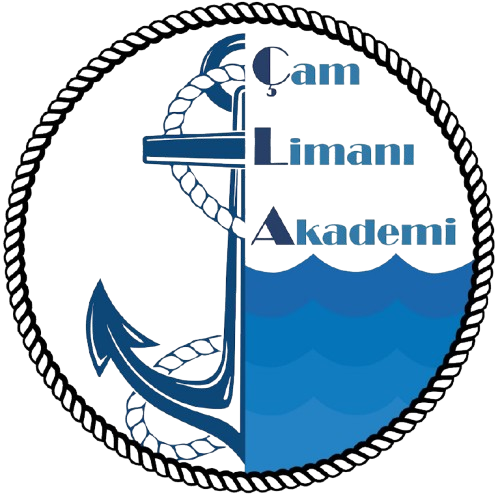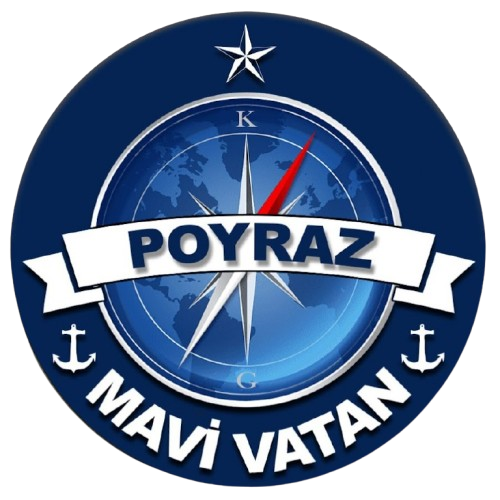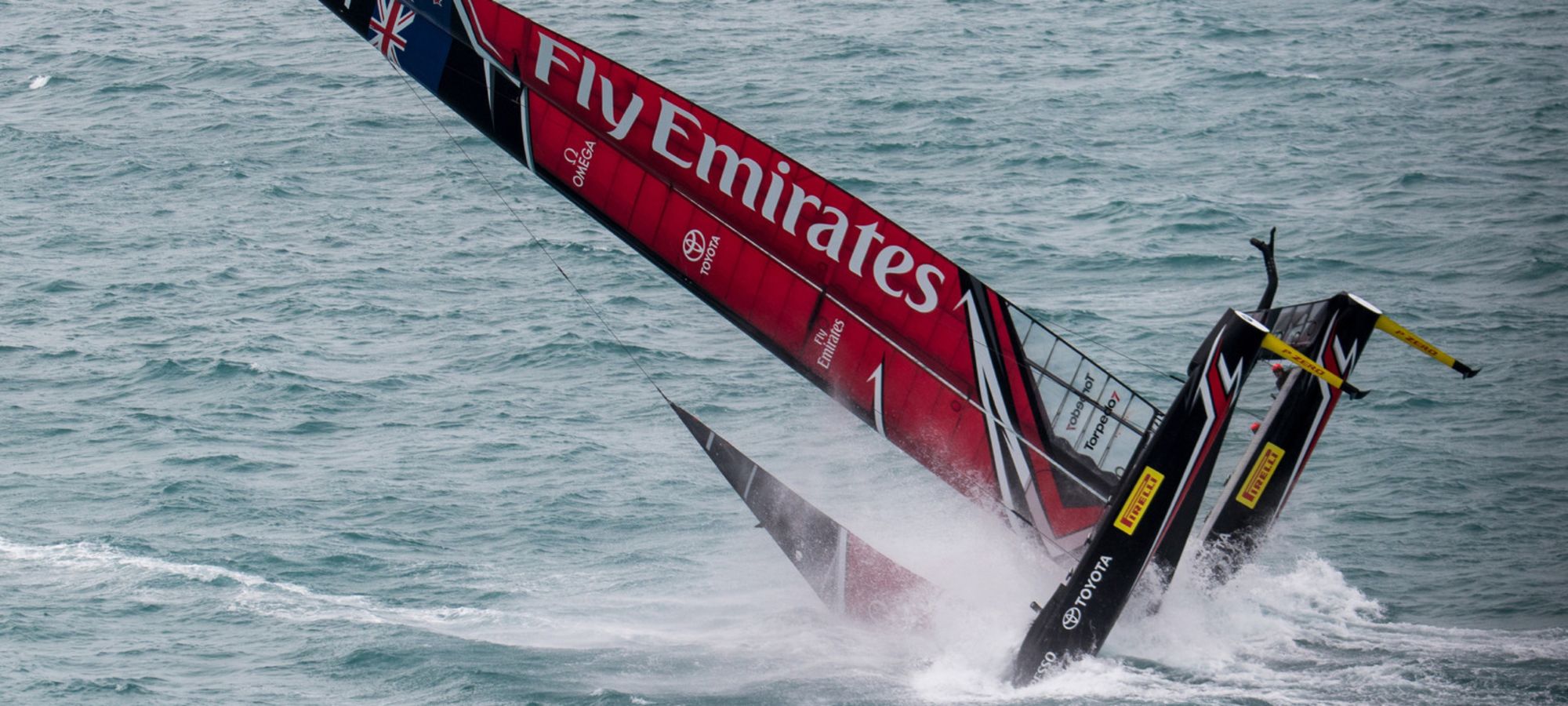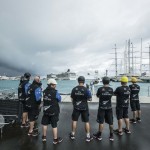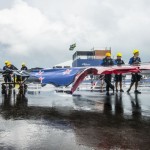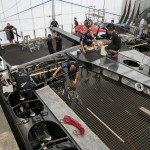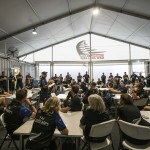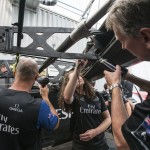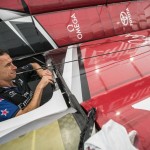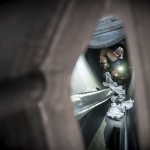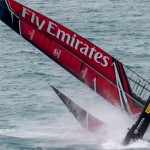The greater America’s Cup audience witnessed Emirates Team New Zealand’s dramatic prerace pitchpole live on TV, but when the cameras disappeared and the damaged boat was nursed back into the tent for evaluation, a small team already short on time and resources was forced to come together and save the campaign. This is the unseen story of those next 48 hours.
As with the finish of every other sailing day in Bermuda, Emirates Team New Zealand’s boatbuilders and engineers assigned with lifting the AC50 from the water wait at the ready. Only this was midday, and there was considerable tension as the team assembled shoulder to shoulder, unsure of when and in what shape Aotearoa would arrive at the base following its capsize early in the Louis
Vuitton America’s Cup Challenger Finals.
There was a shared sense of relief when the boat was lifted, lowered and rolled into the tent, but the obvious damage to the wing was impossible to ignore. Its innards and precision mechanics were compromised, tattered plastic wrap flapped in the wind, and dislodged or missing foam pieces and broken wing frames protruded from its fragile skin.
The boat shed transformed into a triage station as the team poured over the AC50, intent on understanding the extent of the damage and how much work was required to return the boat to the water for either of the next day’s two races. Sailors, designers, administrators, kitchen staff, and physical trainers stepped in to clean, dry, and strip the wounds for a long night of repairs.
Tools Down, Tools Up A somber roar too loud for comfort burst through the adjustable slats in the side of our media container. The team’s head of communications, Hamish Hooper, and I were strategizing how best to tell the story we had just captured. It was midday, and the entire team had already rallied to swap wings after the race wing sustained pre-race damage, delivering the boat back to the course in less than an hour and just in time for the first race of the day (which they won). We hadn’t yet moved to the TV outside our container to watch the race alongside the rest of the shore team, but instantly upon hearing the roar, Hooper wheeled to the wall to investigate. Opening a slat, he peered through, closed it, wheeled back and said, “We just pitchpoled.”
And that was it. We both went head down and straight to work. It’s the Kiwi way; they simply strive in adversity.
When the boat was finally back in the tent, a “tools down” all-team meeting was called, and we listened to team Chief Operating Officer Kevin Shoebridge outline what had to be done. With two races scheduled for the next day and a questionable forecast, the entire campaign was on the line. Right there, outside the team kitchen, everybody came together, well-aware of the significance of their roles, no matter how big or small.
For a small group that had endured plenty of obstacles already, there was a sense of calm and a can-do attitude.
The shed buzzed with tools and bodies overnight. The normal post-race routines were much the same, just intensified tenfold. The monumental task of managing the repair fell to head boatbuilder Sean Regan, chief of delegation. Structural engineers tested the hulls and wing for integrity, because damage you can’t see is the worst kind. Hydraulic and electrical teams examined their respective areas, to the extent they could, while the boat was idle in its cradle. The wing team disassembled the tattered wing while boatbuilders swarmed over the fairings to see what could be rebuilt or salvaged.
The sailors who were less skilled at boatbuilding picked up trash and swept the floors all night, and offered spare hands and muscle where needed. Most of the designers grabbed hair dryers and held fans to accelerate the drying process. When not making food to fuel the team, the kitchen crew was among the carnage, taking orders with the rest of the team. Administrative staffers served coffee and boosted morale until sun up. Everyone was involved and nobody went home until all that was left to do was wait for first repairs to cure and the boat to dry.
Source: sailing world


